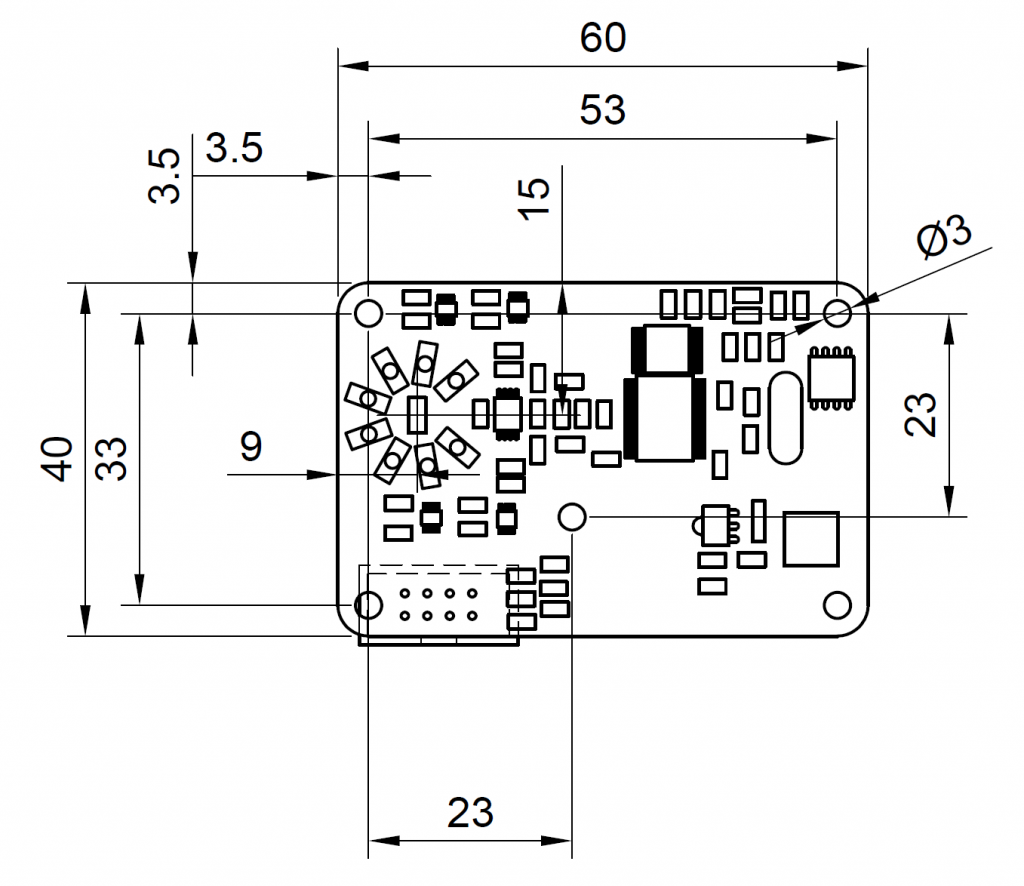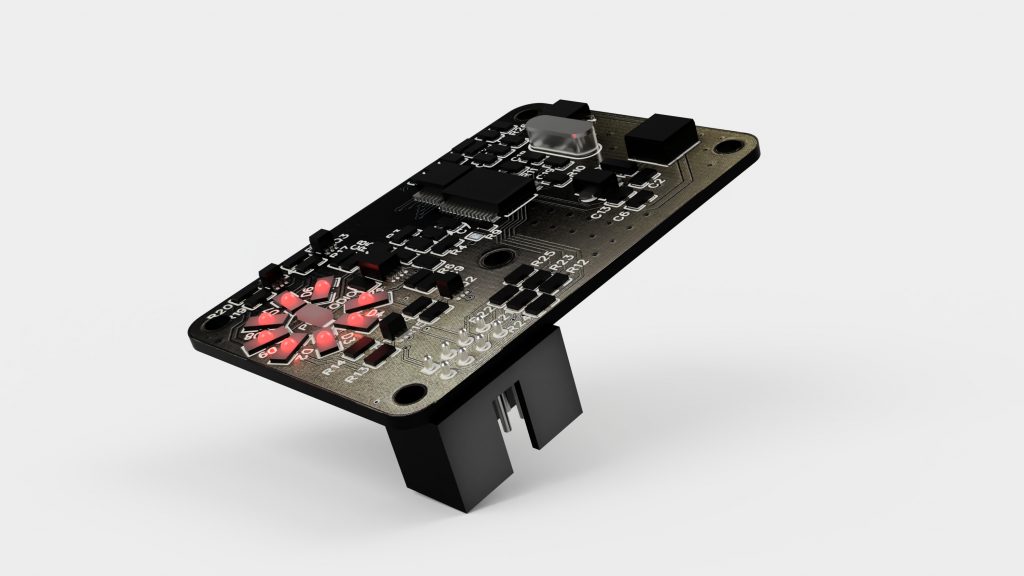The breakout board is the heart of the ecosystem. It shines sequential infrared light on a plastic object, measuring the reflectance at multiple wavelengths. The measurements are communicated over the SPI protocol to an external processor.
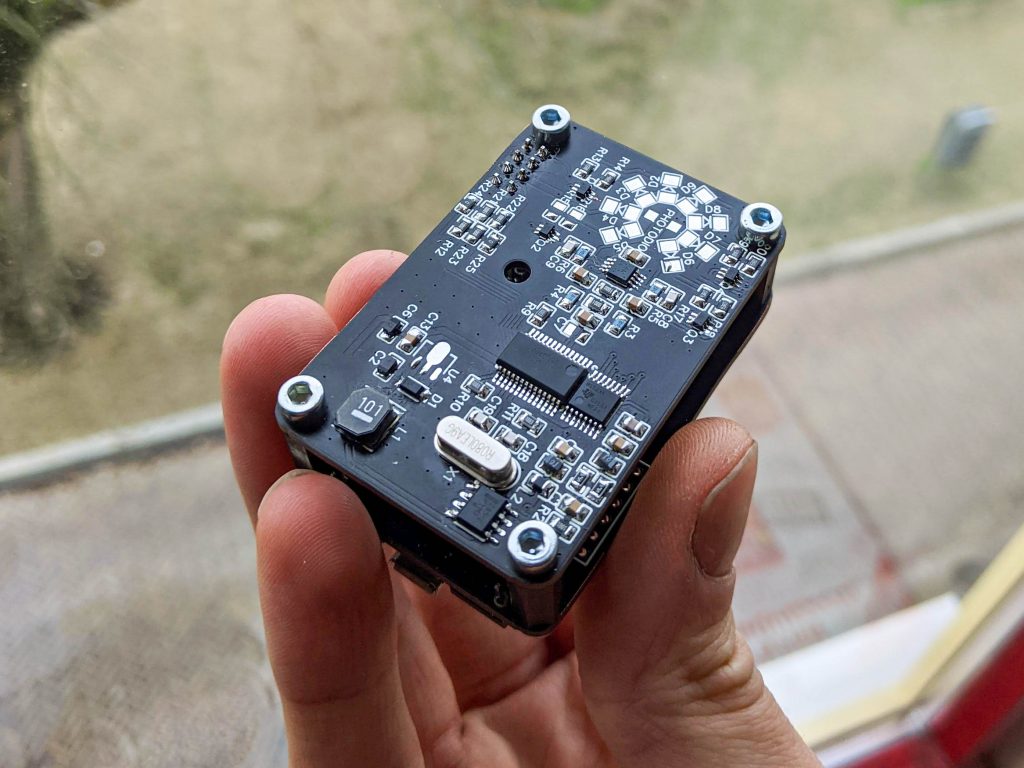
Description of the breakout board
The breakout board houses all the components required to perform discrete infrared spectroscopy. With a size of just 60x40mm, it is a tiny board that allows people to identify the five most common plastics with ease. The breakout board shines 8 individual LEDs with a wavelength of 850, 950, 1050, 1200, 1300, 1450, 1550 and1650nm. The LEDs have a narrow bandwidth with a full-width half max of 20nm and a tolerance of
just 3nm. The reflection from these LED lights can be measured by the sensitive and precise analog- to -digital converter, the ADS1256. This communicates to a processor with a standard SPI interface, making plastic identification as straightforward as possible. An overview of the way the breakout board works is presented below.
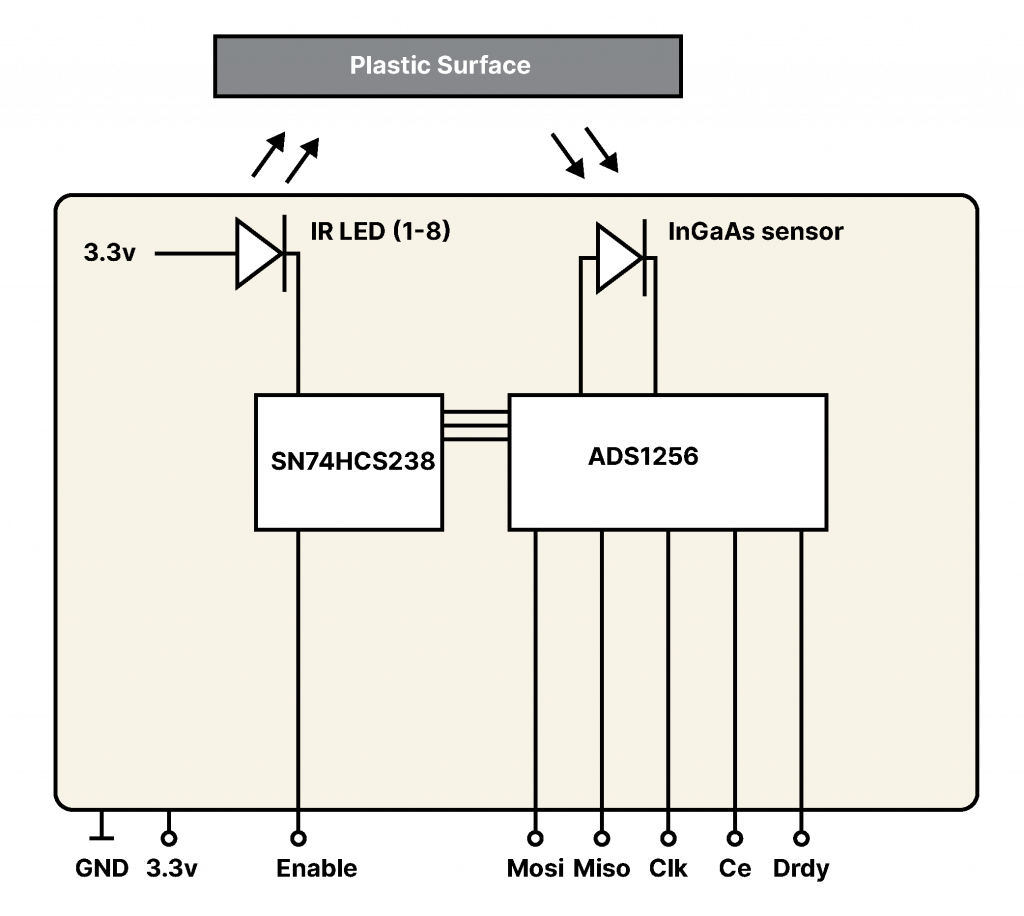
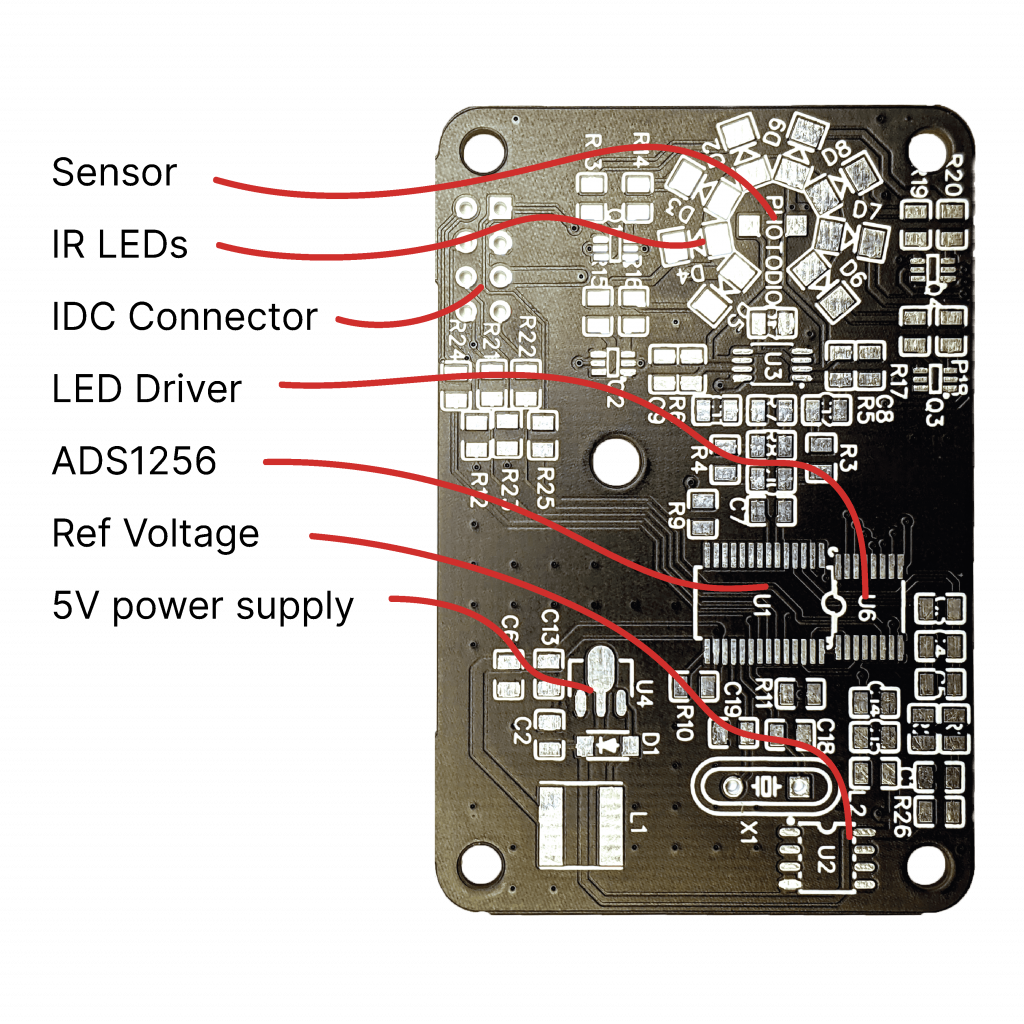
| Component | Description |
|---|---|
| PCB | 1.6mm PCB, 60x40mm. All components are 0805 SMD and are placed on a single side. 3mm mounting holes plus an extra mounting hole for possible future upgrades. |
| IR LEDs | Discrete wavelength IR LEDs to illuminate the plastic object are placed in a circular shape around the InGaAs sensor. The IR LEDs range from 850 to 1650nm. |
| InGaAs sensor | This Photodiode measures the amount of light reflected from the plastic object. |
| ADS1256 | This analog-to-digital converter (ADC) translates the sensitive and precise voltage from the InGaAs sensor to a human-readable output over an SPI interface. The converter also controls the LED driver with SPI commands. |
| LED driver | The LED driver makes it possible to turn the IR LEDs on and off sequentially. It also allows for pattern flashing to reduce measurement noise. |
| 5V power supply | The 3.3 volts input voltage is boosted up to 5 volts required for the analog front end of the ADC. |
| 2.5V reference voltage | Supplies the ADC with a 2.5 volts reference voltage to ensure high-quality measurements. |
| IDC connector | The eight-pin IDC connector is the main interface of the breakout board, with the indicator slot preventing reverse connection. |
Functioning of the breakout board
The breakout board is connected to an external processor
through an eight PIN IDC connector, a connector with an
indicator slot that prevents reverse connection of the breakout
board. The connector houses a 3.3v line, a ground line, a strobe
line for the LEDs, and the SPI lines. The SPI lines connect the
external processor to the ADS1256. The ADS1256 is a 24-bit
analog-to-digital converter i.e., a very precise voltage meter.
The ADS1256 controls the SN74HCS238, a demultiplexer
which, based on four signal pins, can have eight output pins.
Each of the eight output pins controls a MOSFET, which turns
the desired LED on or off. Once a LED is on, the ADS1256
measures its input voltage and turns the LED back off. This
is done for each LED. The voltage the ADS1256 measures is
the voltage generated by the sensor, amplified with an op-amp.
This makes the ADS1256 a very sensitive, precise, voltage
meter. The 5-volt power supply and the reference voltage are
required for the ADS1256 to function correctly.
The result is a breakout board that is built in a modular manner,
with manufacturers able to choose the desired processing type,
which makes it possible to incorporate the breakout board
across a wide range of recycling contexts. The breakout board
is built with components that are readily available online
and can be soldered by hand, making it ideal to be built by
local Makerspaces or Fablabs close to the desired context.
No proprietary tools or software are required to replicate this
breakout board and the source files are shared in an open and
accessible manner.
| Part number | Part Description | Identifier | Quantity | Cost | |
|---|---|---|---|---|---|
| PCB | 1 | printed circuit board | n.a. | 1 | €1.00 |
| ADC | 1.01 | ADS1256 | U1 | 1 | €15.30 |
| Volt ref | 1.02 | 2.5ref volage | U2 | 1 | €0.85 |
| Opamp | 1.03 | Opamp 237 | U3 | 1 | €3.08 |
| Demultiplexer | 1.04 | Demux | U6 | 1 | €0.35 |
| 5V PSU | 1.05 | 5v power | U4 | 1 | €0.17 |
| Photodiode | 1.06 | InGaAs sensor | Photodiode | 1 | €13.80 |
| Inductor | 1.07 | inductor | L1 | 1 | €1.50 |
| Diode | 1.08 | diode | D1 | 1 | €1.40 |
| Crystal | 1.09 | crystal | X1 | 1 | €0.75 |
| Connector | 1.1 | 8 pin header | H1 | 1 | €0.96 |
| Transistor | 1.11 | Transistor | Q1,Q2,Q3,Q4 | 4 | €0.55 |
| Ferrite bead | 1.12 | ferrite bead | L2 | 1 | €0.09 |
| LEDs | 1.13.1-9 | 1650nm | D2- D9 | 8 | €131.71 |
| Resistors | 1.14.1-26 | 240k | R1-R26 | 26 | €0.40 |
| Capacitors | 1.15.1-19 | 47n | C1-C19 | 19 | €2.21 |
| Total cost Breakout board | €176.97 |

